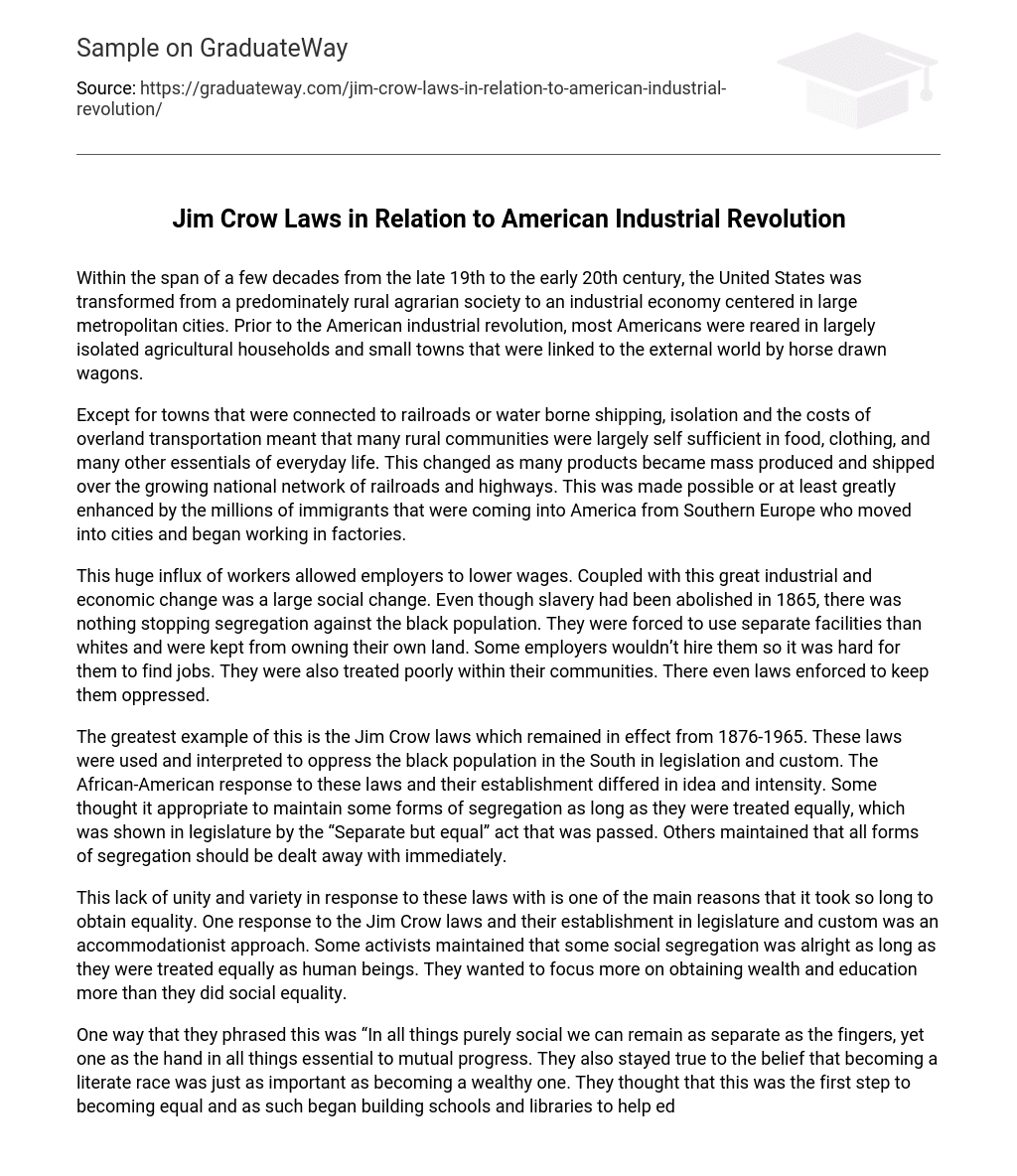Within the span of a few decades from the late 19th to the early 20th century, the United States was transformed from a predominately rural agrarian society to an industrial economy centered in large metropolitan cities. Prior to the American industrial revolution, most Americans were reared in largely isolated agricultural households and small towns that were linked to the external world by horse drawn wagons.
Except for towns that were connected to railroads or water borne shipping, isolation and the costs of overland transportation meant that many rural communities were largely self sufficient in food, clothing, and many other essentials of everyday life. This changed as many products became mass produced and shipped over the growing national network of railroads and highways. This was made possible or at least greatly enhanced by the millions of immigrants that were coming into America from Southern Europe who moved into cities and began working in factories.
This huge influx of workers allowed employers to lower wages. Coupled with this great industrial and economic change was a large social change. Even though slavery had been abolished in 1865, there was nothing stopping segregation against the black population. They were forced to use separate facilities than whites and were kept from owning their own land. Some employers wouldn’t hire them so it was hard for them to find jobs. They were also treated poorly within their communities. There even laws enforced to keep them oppressed.
The greatest example of this is the Jim Crow laws which remained in effect from 1876-1965. These laws were used and interpreted to oppress the black population in the South in legislation and custom. The African-American response to these laws and their establishment differed in idea and intensity. Some thought it appropriate to maintain some forms of segregation as long as they were treated equally, which was shown in legislature by the “Separate but equal” act that was passed. Others maintained that all forms of segregation should be dealt away with immediately.
This lack of unity and variety in response to these laws with is one of the main reasons that it took so long to obtain equality. One response to the Jim Crow laws and their establishment in legislature and custom was an accommodationist approach. Some activists maintained that some social segregation was alright as long as they were treated equally as human beings. They wanted to focus more on obtaining wealth and education more than they did social equality.
One way that they phrased this was “In all things purely social we can remain as separate as the fingers, yet one as the hand in all things essential to mutual progress. They also stayed true to the belief that becoming a literate race was just as important as becoming a wealthy one. They thought that this was the first step to becoming equal and as such began building schools and libraries to help educate blacks. This response is greatly contrasted by more radical responses. Many reformers fiercely opposed any form of accommodation and called for complete social, economic, and political equality. Some of them also made arguments for women’s rights, claiming that it was mothers who needed the greatest uplifting.
The more radical reformers even tried to get the African-American population to take up arms against their oppressors, stating that this was the only way they would be heard and their whims met. Responses such as these gained more support within the African-American community than lighter approaches, but were much more fiercely opposed by whites. Some reformers even went so far as to suggest complete separation from the white society, claiming that blacks would never truly be treated equal and that the only true solution was to move back to their “homeland” and start a new society with their own laws and customs.
These kinds of responses met with very limited approval, although they weren’t completely brushed aside. This period of industrialization and segregation was a crucial point in American history. Segregation was only successful for so long because of the black community’s varying opinions and responses to their plight. From the most conservative to the most radical, each response played a role in shaping the African-American community as it appears before us today.





